Are Citroen, Peugeot and Vauxhall Vans The Same?
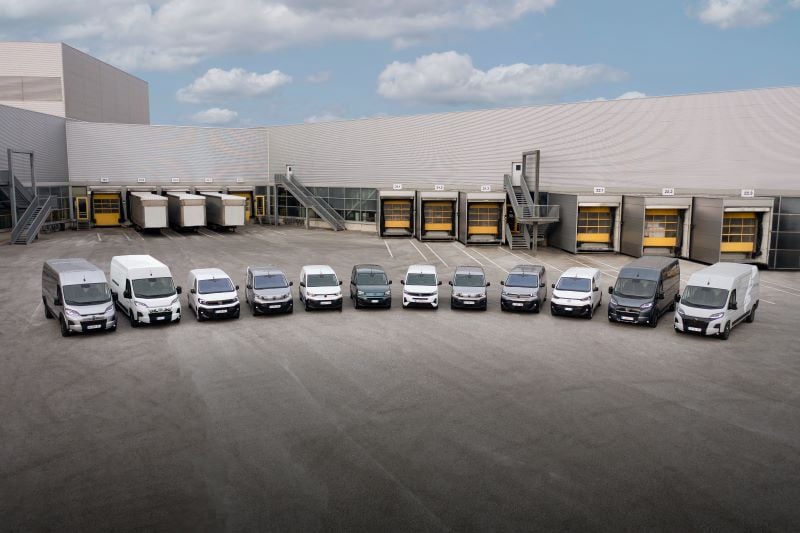
If you’re an eagle-eyed road user, you might have noticed there are a fair number of vans out there that look mightily similar yet have different badging – but are they all really the same?
The short answer to this is, yes.
Badge engineering isn’t a new phenomenon in the commercial vehicle industry. Vans tend to have fairly long product cycles so it is in the interests of manufacturers to collaborate with rivals to curate their own models on identical platforms to reduce development and production costs.
For example, while it might take an expert eye to decipher them, look closely at the Ford Transit Custom and Volkswagen Transporter and you’ll see the similarities between these sister models. The same goes for the Caddy/TransitConnect and Amarok/Ranger pick-ups.
Then there is Nissan and Renault, which both have new large vans based on the same platform – the Interstar and Master – while Mercedes-Benz joined them in creating the Citan, its version of the Townstar and Kangoo.
Stellantis, however, has taken things a bit further, in part because the automotive giant was only created in 2022 and happened to merge together several brands that already had their own commercial arms. As the parent company of FIAT, Citroen, Peugeot and Vauxhall, it stands to reason that they have pooled resources to create their line of vans.
So how far does this collaborative approach go and where – if anywhere – do the models differ.
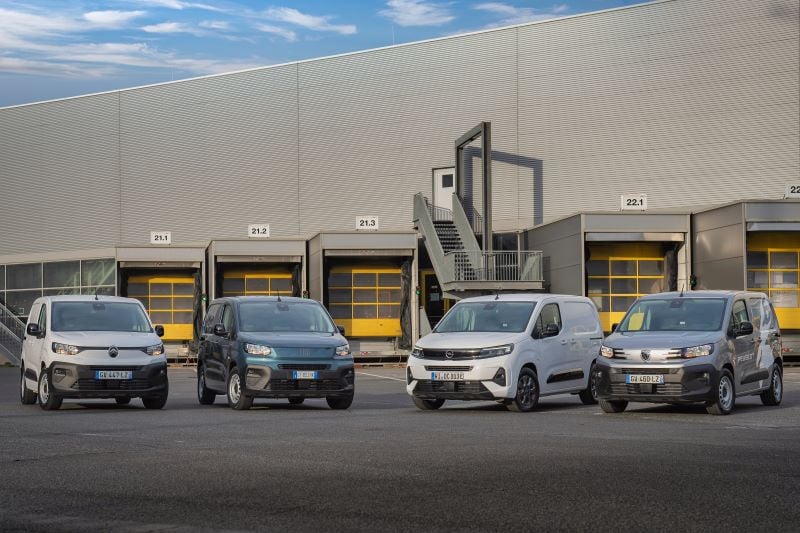
STELLANTIS SMALL VANS
- Citroen Berlingo
- FIAT Doblo
- Peugeot Partner
- Toyota Proace City
- Vauxhall Combo
At the lower end of the range, Stellantis is currently responsible for five interpretations of its small van platform.
The model itself is largely the product of PSA (Peugeot/Citroen) whose models – the Partner and Berlingo respectively – enjoyed status as Europe’s most popular small vans.
In 2019, the PSA Group grew to include Vauxhall/Opel, leading to the Combo being added to the line-up and sharing the same underpinnings. Previously the Combo had shared its mechanicals with the FIAT Doblo, but switched allegiances when it became part of PSA.
However, when FIAT-Chrysler went on to merge with PSA – thus creating the new Stellantis Group – the Doblo was added to the line-up as well.
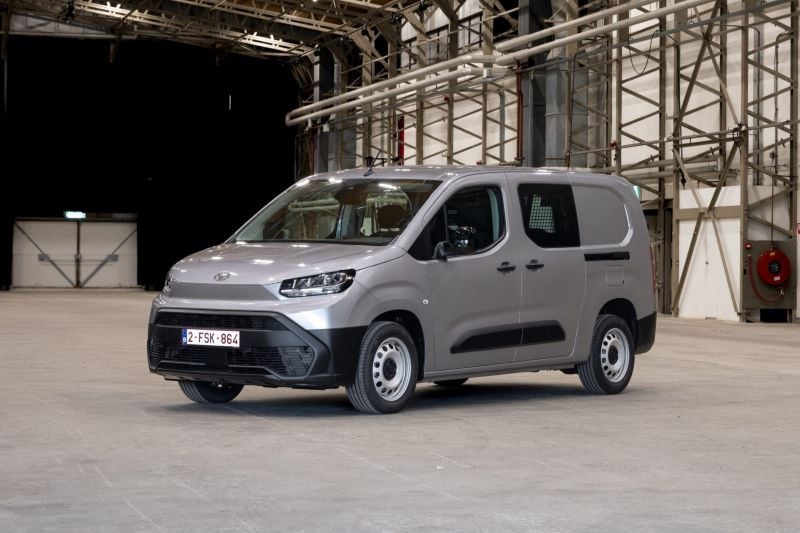
Not only that, Stellantis has since reached an agreement with Toyota to expand its commercial offerings in Europe. While this began with the Proace medium van (replacing the Toyota HiAce), the Japanese firm has capitalised on the access to more platforms to create the Toyota Proace City small van and the Toyota Proace Max.
Not unexpectedly, these five models are all-but-identical on the surface, boasting identical dimensions and features, while the engine range of diesel and electric offerings is also the same across the board.
Instead, the differences lie in the tweaked exterior details in line with their respective brand signatures (if that matters to you), but it is worth pointing out that the Toyota is the only one to come with a mammoth ten-year warranty.
The Stellantis small vans are built across Europe with plants in France, Spain, Turkey plus one in Africa, in Algeria. The electric versions, however, are built at the Ellesmere Port plant in Wales.
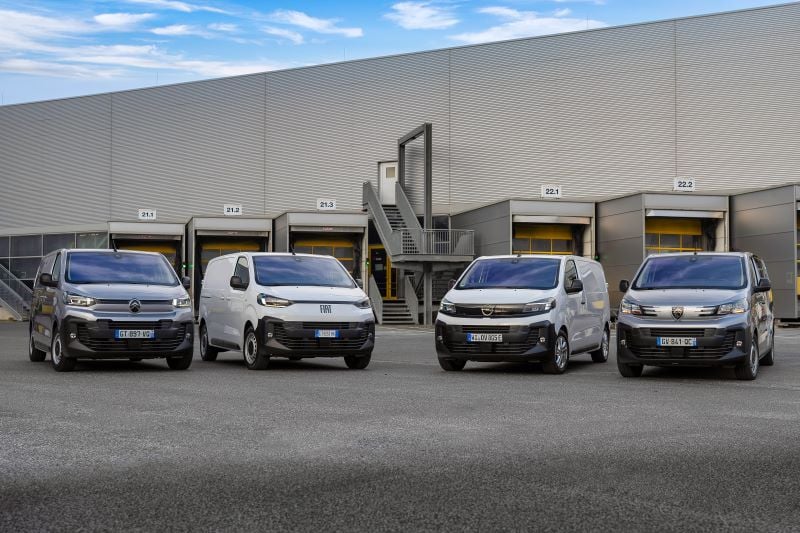
STELLANTIS MEDIUM VANS
- Citroen Dispatch
- FIAT Scudo
- Iveco eJolly
- Peugeot Expert
- Toyota Proace
- Vauxhall Vivaro
It’s a similar story for the medium van line-up, though FIAT and PSA had an agreement to develop models long before the two companies joined forces. As such, the Citroen Dispatch, FIAT Scudo and Peugeot Expert have been bedfellows since the 1990s.
The popular Vauxhall Vivaro, however, was woven into the commercial line-up upon being bought out by PSA, thus ending a long-standing relationship with Renault to develop its medium-sized vans.
The Toyota Proace is also a recent addition, but again is the only model to benefit from a ten-year warranty.
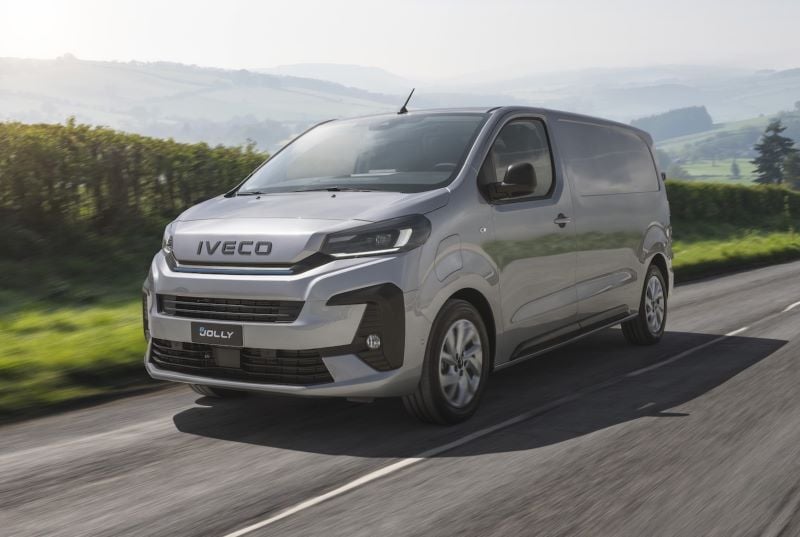
From 2026, however, there will be a sixth addition to the line-up following a tie-up between Stellantis and Italian manufacturer Iveco.
The Iveco eJolly will become the smallest model in the firm’s range and will only be sold as an electric model.
As expected, the models are identical in dimensions and engineering, with the only differences to be found in minor styling details and aftersales offers.
The Citroen Dispatch, FIAT Scudo, Peugeot Expert, Iveco eJolly, Toyota Proace and Vauxhall Vivaro are built in France, Germany, Turkey and Uruguay.
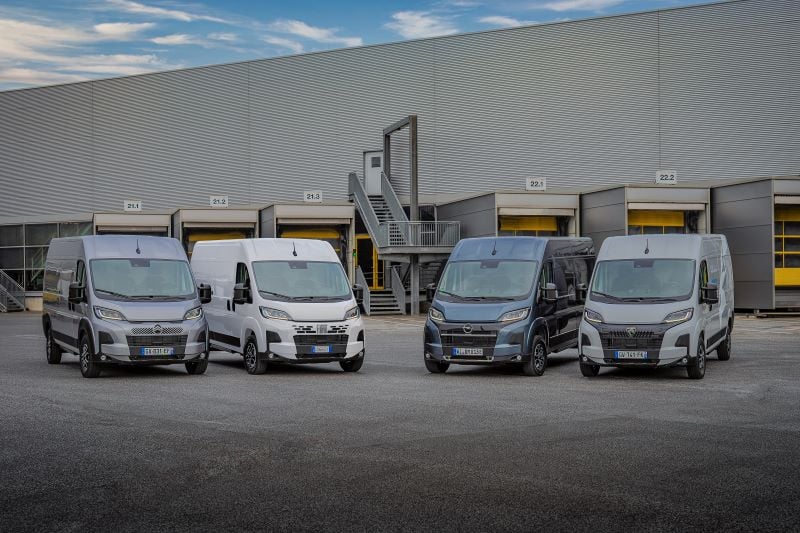
STELLANTIS LARGE VANS
- Citroen Relay
- FIAT Ducato
- Iveco eSuper Jolly
- Peugeot Boxer
- RAM ProMaster
- Toyota Proace Max
- Vauxhall Movano
A total of seven different models are to be spun off from Stellantis’ large van platform to be sold around the world.
As with its medium van range, FIAT and Peugeot/Citroen have enjoyed a lengthy partnership when it comes to developing large vans with the FIAT Ducato, Peugeot Boxer and Citroen Relay having been closely related since 1994.
The addition of Vauxhall/Opel to the line-up saw the latest generation Movano built on this platform, rather than the Renault Master upon which the former generation was based.
One variation of the Vauxhall Movano and Vivaro, incidentally, is the inclusion of a hydrogen fuel cell version as part of a limited trial commissioned by Stellantis to determine whether it could be a viable alternative fuel for commercial vehicles in the future.
Toyota has also worked to expand its Proace line, in much the same way Ford has done with Transit, by adding the Toyota Proace Max using the same engines and dimensions as its siblings.
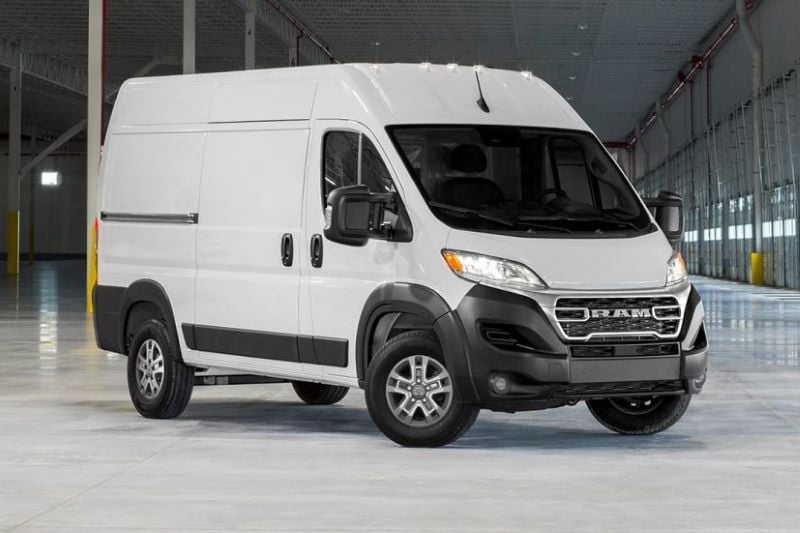
There will also be an electric-only Iveco eSuper Jolly joining the line-up in 2026 to sit below the Daily, while there is even a US-only version on sale as the RAM ProMaster.
These models are built in Italy, Mexico and Poland.

Lease A New Van With Vansdirect
Leasing a van with Vansdirect has never been easier to better value for your business
Get the right van lease deal, right now on the van you want, including the Ford Transit Custom, Vauxhall Movano, Mercedes-Benz Sprinter and Citroen Berlingo.
Speak to our expert team today and you could be driving a new van sooner than you expected for less than you think.
















